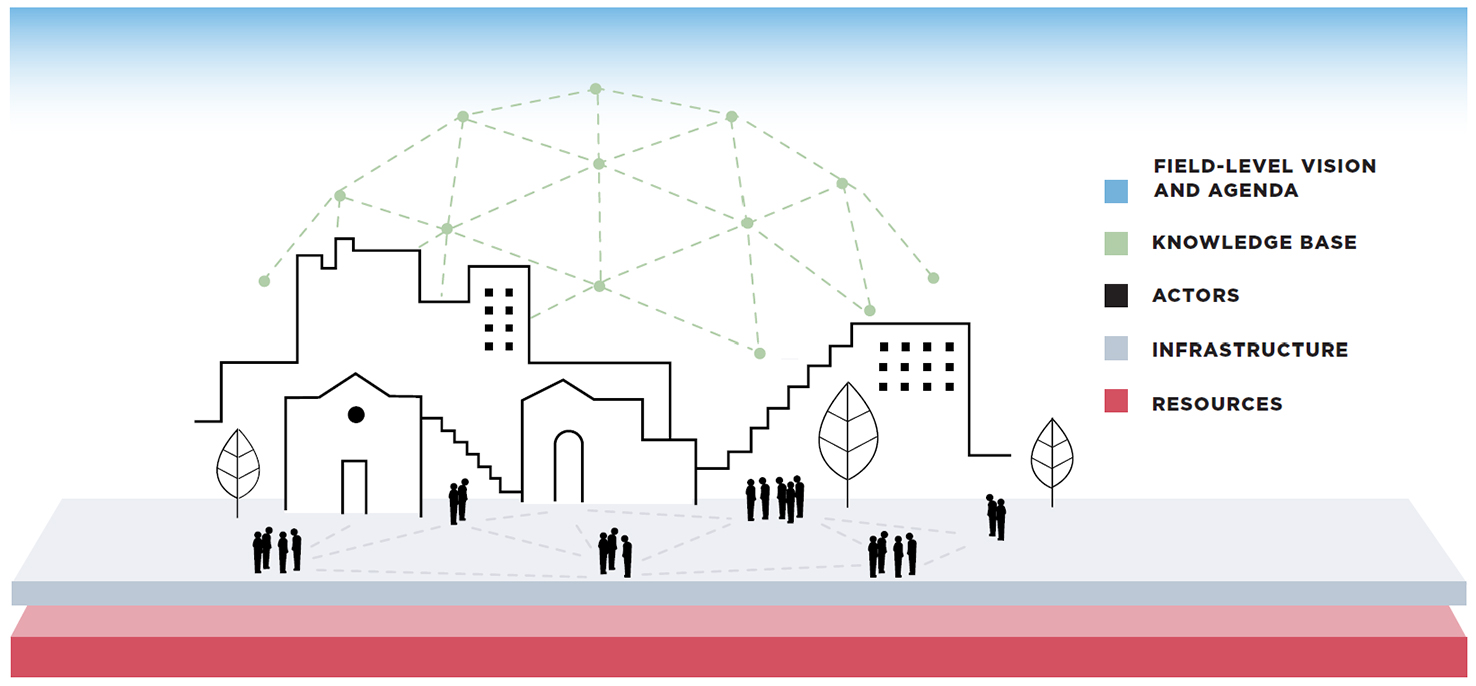SERN’s strategic sunset involved partnering with outside consultants to assess our impact and write our organizational story. These projects had the dual purpose of celebrating SERN’s partners, team, and all that we accomplished together, as well as transparently sharing our experience so that it can support other people and organizations with related goals.
SERN’s history, work, and the enablers and challenges behind our impact are described in the documents below. These resources draw on interviews across research, practice, policy, and philanthropy; organizational documentation; and the third-party assessment of SERN’s impact, which leveraged additional interviews, survey data, and funding analyses.
As SERN concludes its operations, we are left with immense gratitude for everyone who is part of this story.
The Evolution and Impact of Student Experience Research Network
SERN was founded to advance interdisciplinary studies on students’ learning mindsets, or beliefs about learning and school. Over time, SERN expanded into a hub of research knowledge generation, sharing, and use – focused on building an education system that respects every student as a valued person and thinker, and involving hundreds of influential researchers, practitioners, policymakers, and funders. Read the story of SERN’s evolution and impact.
Mobilizing Research for Structural Change in Education
Authentic feedback loops between academic research and education practice and policy are relatively rare. At the same time, practically relevant research is in many ways disincentivized by structures in academia. Read about how SERN bridged and sought to challenge gaps in the current system to facilitate, synthesize and translate, and support the use of practically relevant research on student experience to contribute to structural change in education.
Becoming a Field Catalyst
SERN worked to expand access to knowledge, cultivate and elevate the leadership of others in the field, enable relationship-building and collaboration across silos, and serve as a thought partner and capacity-builder. Research by The Bridgespan Group introduced the term “field catalyst” to describe organizations that engage in this type of work, which is essential for equitable systems change yet persistently under-resourced. Read about how SERN grew into and enacted the field catalyst role.
Reflections from a Strategic Sunset
In 2022, SERN made the difficult decision to engage in a strategic sunset, given major shifts in the field’s needs, challenges in organizational growth and evolution that are common among field-level intermediaries like SERN, and a significantly weaker long-term funding climate for SERN’s work. Read about how SERN made this decision and used our resources and sunset programming to embed capacity in the field and help continue progress toward an education system that consistently and equitably centers student experience.
SERN’s Impact as a Field Catalyst
In its research on field catalysts, The Bridgespan Group points to five characteristics of a field that can be used to assess the impact of a field catalyst since the ability to advance equitable systems change relies on a field’s development across these domains.

DEFINITIONS
FIELD-LEVEL VISION AND AGENDA
The combination of approaches field actors will pursue to address barriers and develop solutions to the field’s focal problem or issue.
KNOWLEDGE BASE
The body of academic research and practical knowledge that helps actors better understand the issues at hand, and identifies and analyzes shared barriers.
ACTORS
The set of individuals and organizations that together help the field develop a sense of shared identity and common vision.
INFRASTRUCTURE
The “connective tissue” that enables greater innovation, collaboration, and improvement among a field’s actors over time.
RESOURCES
Financial and non-financial capital that supports the field’s actors and infrastructure.
SERN’S IMPACT
FIELD-LEVEL VISION AND AGENDA
The concept of student experience is “on the map” in that a wider set of influential education leaders, funders, and researchers now see student experience as connected to their work and feel responsible for stewarding it forward.
KNOWLEDGE BASE
A larger body of practically relevant, interdisciplinary research is contributing to our understanding of student experience, and key findings from this research have been identified, synthesized into a coherent body of insights, and made accessible to actors outside of academia.
ACTORS
A broader, more diverse group of scholars have gained recognition for their research and leadership in the student experience field.
INFRASTRUCTURE
There are stronger relationships and growing collaboration in the field, both among researchers and across sectors and silos (e.g., across research and practice), as well as increasing practical application of insights from student experience research.
RESOURCES
Funders are allocating more resources to projects that integrate student experience and related concepts, and SERN’s re-granting directed more philanthropic funding to racially minoritized scholars and early career scholars in the field.
HOW SERN CATALYZED FIELD CHANGE
KNOWLEDGE DEMOCRATIZER
Synthesized and translated student experience research and made key insights accessible and digestible for non-academic audiences
DISRUPTOR OF POWER DYNAMICS
Elevated diverse voices and interrogated conventional thinking and practices, including via (re) distribution of resources
EFFECTIVENESS AMPLIFIER
Enabled other actors in the field to “move further faster” and be more effective at what they did
SILO-BUSTER AND BRIDGE BUILDER
Intentionally constructed spaces and brokered relationships that spanned the realms of research, policy, practice, and philanthropy; enabled interdisciplinary dialogue and cross-pollination of ideas